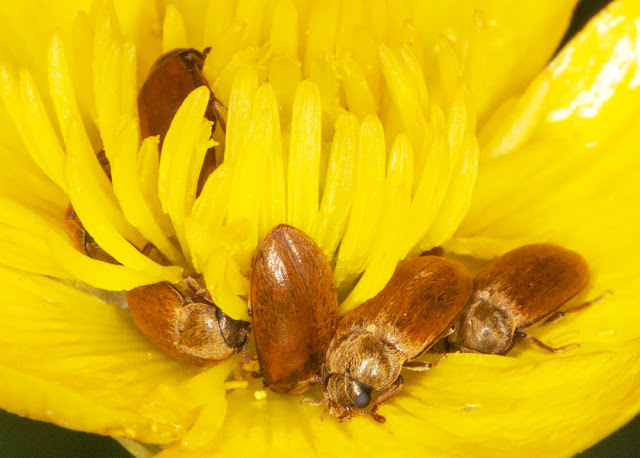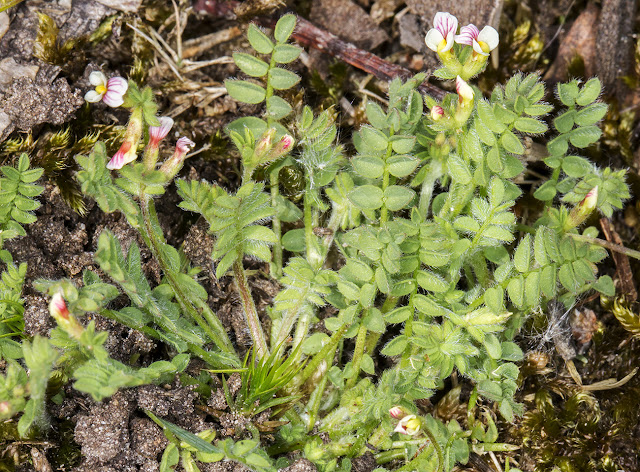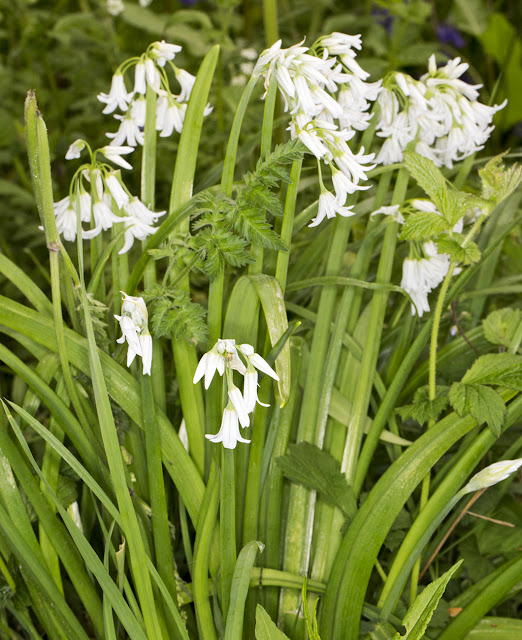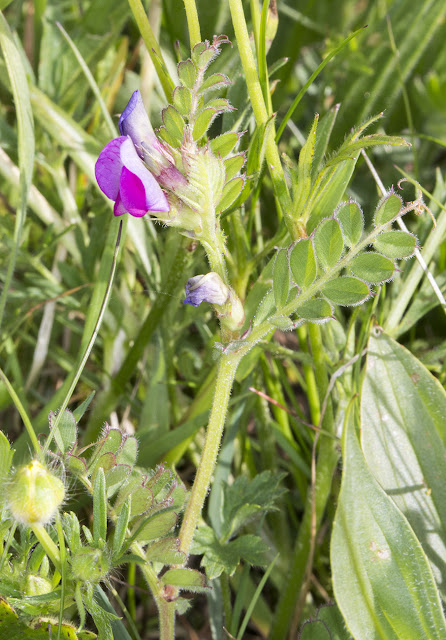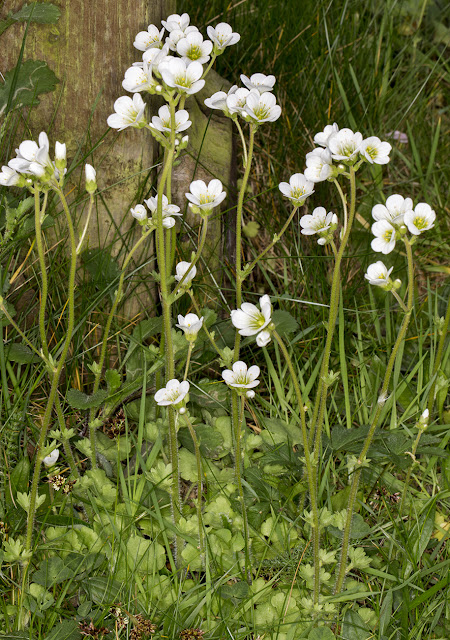 |
| Meadow Saxifrage, Saxifraga granulata. Hayes churchyard. 4 May 2015. |
Many Spring flowers are all around, and the full Summer bloom is not far away. Here are some I found at the start of May. The first, Meadow Saxifrage, is scarce in Kent but can be found in (at least) two places near me. This group is in the churchyard in Hayes, where it is widespread and well established.
 |
| Cuckooflower, Cardamine pratensis. Hayes Churchyard. 4 May 2015. |
It competes in size and location with the Cuckooflower, also called Milkmaids or Lady's Smock (Why, I wonder?). In Latin it's the Meadow Cardamine. The colour of the flower varies from white to this slightly bluish pink.
But one of the biggest hits of this season is the glorious Bulbous Buttercup.
 |
| Bulbous Buttercup, Ranunculus bulbosus. Keston Common. 4 May 2015. |
This is the earliest buttercup to flower en masse. The woodland Goldilocks Buttercup is earlier, but that is scarce and fleeting. This one can fill fields with its bright golden glow. It can be told apart from the Creeping Buttercup, also common, by its fully reflexed sepals, all turned back to touch the stem below them; and most of the Creeping Buttercups come out later.
 |
| Germander Speedwell, Veronica chamaedrys. Hayes Churchyard. 4 May 2015. |
Also coming out now, following on from the Common Field Speedwell (which is a foreigner from Persia) is this small bright blue flower, Germander Speedwell, sometimes called Bird's-eye Speedwell. There are half a dozen common Speedwells and several scarcer ones which are not all that difficult to find, and actually people sometimes mistake this Germander for the Persian species, so you can tell this one by: 1. Flowers in racemes - many of them developing in turn from one flower-stem. 2. Leaves with no stalks, or hardly any. 3. Twin lines of hair on the stems, on opposite sides, their positions alternating between leaf nodes.
 |
| White-flowered Herb Robert, Geranium robertianum var. bernettii. Keston, 4 May 2015. |
Last for today: an unusual variety of a very common little Geranium, Herb Robert, that normally has reddish-purple flowers. There are two white-flowered varieties. The other one, var. alba, is sometimes sold commercially as Celtic White; it has no red pigment at all in the leaves or stems. This one, var. bernettii, does, as you can see. I saw this in the same spot four years ago, so it seems to be persistent, not just an occasional sport.
